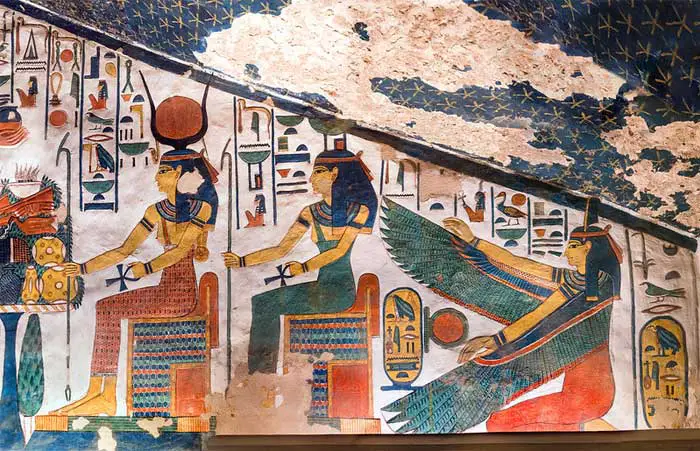The Ankh
The Ankh is a symbolic representation of eternal life. It holds a deep significance within Egyptian culture and continues to inspire and fascinate in modern times. The importance for the ancient Egyptians is well portraited by the extended use of the Ankh on temple walls, pillars, and other artifacts.
Origins and Symbolism of the Ankh.
They have yet to discover the precise origins of the Ankh. Still, it emerged around the Early Dynastic Period (c. 3100-2686 BCE) and became more prevalent throughout Egyptian history. In later periods, the original meaning of the symbol was lost. Still, it continued to be a consistent hieroglyphic insignia representing life.The Ankh was rooted in the ancient Egyptians' core beliefs and religious practices.
The original meaning of the Ankh remains a subject of debate, with Egyptologist A. Gardiner proposing it as a sandal strap or possibly a magical knot. The hieroglyphic sign, representing life ('nh), points towards divine, eternal existence. Often, deities hold the Ankh in their hands or extend it to people, and it symbolizes their power to give and preserve life. Air and water are essential elements for life, and the Ankh is used to grant and control these vital resources. Gods would hold the Ankh in front of a pharaoh's face, giving him "the breath of life," water would flow over the pharaoh during ritual purification.
It represents the concept of "ankh," which means "life" for the ancient Egyptians. The looped top of the symbol signifies life's eternal and infinite nature. The vertical line represents the transition from earthly existence to the afterlife.
The Connection with Egyptian Deities.
In tombs, pharaohs frequently received ankh signs from the gods. One of the most significant associations is with Isis, the goddess of fertility, magic, and motherhood. It represents her power to give and nurture life. The goddess Hathor, often depicted with cow horns and a sun disk, is also associated with the Ankh. The ancient Egyptians believed that the goddess of love, beauty, and joy held the key to everlasting life. The depiction of the Ankh in the hands of these deities underscored its connection to their divine powers.
 © kairoinfo4u - Mural in the tomb of Nefertari with Isis and Nephthys holding a Ankh
© kairoinfo4u - Mural in the tomb of Nefertari with Isis and Nephthys holding a AnkhAnkh's Role in Egyptian Art and Iconography
The Ankh was a widespread symbol in ancient Egyptian art, iconography, and everyday life. Found in various forms, including jewelry, wall carvings, and tomb paintings. The Ankh was a popular motif in jewelry, with ancient Egyptians wearing Ankh-shaped amulets and pendants to invoke its protective and life-giving powers. These jewelry pieces were worn by the living and the deceased, signifying a desire for eternal life and protection in the afterlife. The ancient Egyptians used the Ankh extensively in wall carvings and tomb paintings, serving as a reminder of the promise of eternal life.
The Ankh in Modern Culture
Even though the Ankh is millennia old, it still has enduring popularity, and this is due to its powerful symbolism and association with life and immortality. The Ankh has transcended its ancient origins and has found a place in various aspects of contemporary culture.
Variations and Symbolic Derivatives
Throughout history, variations and adaptations of the Ankh symbol have emerged, each with unique significance. One notable variation is the Crux Ansata, the "handled cross." The Crux Ansata combines the Ankh symbol with a Latin cross, emphasizing the blending of Egyptian and Christian symbolism. It became a powerful emblem during the early Christian period in Egypt, representing the merging of religious traditions.
Other symbolic derivatives of the Ankh include the Djed pillar and the Was scepter. The Djed pillar represents stability and endurance and is often associated with Osiris. The Was scepter, featuring a long staff topped with the Ankh, represents power and dominion and is commonly associated with divine authority.
Nowadays, people regard the Ankh as a personal spiritual and mystical symbol. Many individuals and groups use it to connect with ancient Egyptian wisdom and metaphysical beliefs. We find the Ankh in fashion, with clothing, accessories, and jewelry. It is also a popular tattoo choice, a permanent reminder of pursuing life and immortality.
Bibliography
- The Gods and Symbols of Ancient Egypt: An Illustrated Dictionary
- Egyptian Symbols
